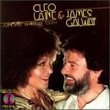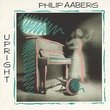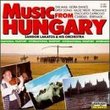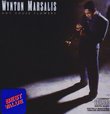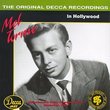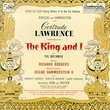| All Artists: Pierre-Laurent Aimard Title: Hommage a Messiaen: 8 Preludes; Selection from: Quatre Etudes de rythme Members Wishing: 2 Total Copies: 1 Label: Deutsche Grammophon Original Release Date: 1/1/2008 Re-Release Date: 10/14/2008 Genre: Classical Styles: Chamber Music, Forms & Genres, Etudes, Historical Periods, Classical (c.1770-1830) Number of Discs: 1 SwapaCD Credits: 1 UPC: 028947780458 |
Search - Pierre-Laurent Aimard :: Hommage a Messiaen: 8 Preludes; Selection from: Quatre Etudes de rythme
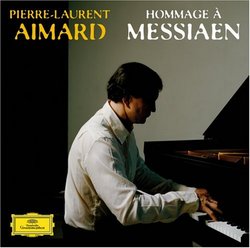 | Pierre-Laurent Aimard Hommage a Messiaen: 8 Preludes; Selection from: Quatre Etudes de rythme Genre: Classical
The centenary of Olivier Messiaen's birth provides an occasion for surveying his place in the landscape of musical creation. This recording, which brings together some relatively neglected pieces from his abundant output, ... more » ![header=[] body=[This CD is available to be requested as disc only.]](/images/attributes/disc.png?v=15401716) ![header=[] body=[This CD is unavailable to be requested with the disc and back insert at this time.]](/images/attributes/greyed_disc_back.png?v=15401716) ![header=[] body=[This CD is available to be requested with the disc and front insert.]](/images/attributes/disc_front.png?v=15401716) ![header=[] body=[This CD is unavailable to be requested with the disc, front and back inserts at this time.]](/images/attributes/greyed_disc_front_back.png?v=15401716) |
Larger Image |
CD DetailsSynopsis
Album Description The centenary of Olivier Messiaen's birth provides an occasion for surveying his place in the landscape of musical creation. This recording, which brings together some relatively neglected pieces from his abundant output, represents both an act of homage to the composer and a reflection on the special position his works occupy in 20th-century music. In three segments, it presents compositions of three different types, each written at a difficult time in his life and emphasizing the fundamental role of the piano in his oeuvre. The Préludes are among Messiaen's earliest pieces, written in 1928-29, when he was 20 and still a student at the Paris Conservatoire. Later he described them as a "collection of successive states of mind and personal feelings". All eight were composed under the shock of the death of his mother, the poet Cécile Sauvage. She is "the dove" of "La Colombe", while the heart-rending "Cloches d'angoisse et larmes d'adieu" gives us an idea of the traumatic effect of her death on so gentle and sensitive a youth. Pieces dealing with grief and mourning are contrasted with others of great luminosity. Thus the "Chant d'extase", placed at the heart of this sombre landscape, allows us a foretaste of the luminous grace of some of the Vingt Regards sur l'Enfant Jésus. The cascading gems of "Les Sons impalpables du rêve" cast a musical spell entirely worthy of the finest works of the 1930s. Messiaen ends his cycle with "Un Reflet dans le vent", a piece that is by turns angry and lyrical. This may be a lesson in optimism on the part of a man of faith who was capable of turning to the light in the blackest of all possible circumstances (an ability also manifested in his Quatuor pour la fin du temps, written in a prisoner-of-war camp). But it could also be an expression of the hope awoken in him by the work's dedicatee, the pianist Henriette Roget, with whom he was in love. The surreal titles of some of these Préludes adumbrate texts that the composer - who had a fondness for the poetry of Paul Éluard - would later write and set to music, especially those of his song cycle Harawi. But what is most impressive about them is the world of colour they inhabit, a world both highly personal and already strongly defined. Each piece involves detailed associations between sound and colour. According to the composer, the fifth Prélude is "polymodal, superimposing an orange-blue ostinato on chordal cascades in a violet-purple mode that is invested with the timbre of a brass instrument". But it is in "Cloches d'angoisse et larmes d'adieu", the masterpiece of the cycle, that the composer most fully discloses his individual treatment of sonority. As Messiaen himself explains: "The bell-like sound combines many modes; the deep resonant tone of the bells and all their high harmonics resolve into luminous vibrations." His subtle use of resonance, inviting us to listen "inside" the bells, turned him into a prophet for generations to come, particularly the composers of spectral music. The composer's passion for nature and birdsong finally became omnipresent in the 1950s, resulting in a series of naturalist works that illustrate two of the more remarkable qualities of Messiaen as man and artist: his exceptional listening powers and his bound¬less capacity for astonishment. The precision and fidelity of his birdsong transcriptions reveal both his amazing ear and his tremendous concern for detail. But as a source of inspiration, this new-found interest also allowed him to escape from the anguish of a life overshadowed first by terrible illness and then by the death of his wife, the violinist Claire Delbos. It is interesting to see this radical move within the wider context of a period marked by other musical aesthetics and languages as well as by techniques that repre¬sented a break with the past. Messiaen made a point of keeping abreast of the work of the younger generation of avant-garde composers, and he himself made an entirely fresh start by writing whole pieces made up of completely new material having no historical point of reference: this was the birdsong that he transcribed systematically. His first "manifesto" was Réveil des oiseaux for piano and orchestra (1953), which is made up entirely of birdsong. By the end of the 1950s, this radicalism, coupled with his love of systemization, had led him to write the vast Catalogue d'oiseaux for piano solo (1956-58), from which two excerpts are included here. "La Bouscarle" (Cetti's Warbler) presents a great variety of birdcalls and suggests a miniature piece of ornithological theatre. The characterization of each call recalls how Messiaen, some years earlier, had defined the dimensions of his musical vocabulary by "individualizing" every sound in a different way. Here each bird has its own timbre, its own speed, its own distinctive musical behaviour. Although written while Messiaen was recovering from a serious illness, the piece still has a great sense of spontaneity and is bathed in light and colour. "L'Alouette Lulu" (Woodlark), conversely, is a night-piece for just two protagonists, a nocturnal poem that bewitches us with its mysterious realism. Like the other pieces that make up the Catalogue d'oiseaux, these two "moments musicaux" seduce us with their immediate freshness, total originality and incredible sonorities. But they also represent an extraordinary example of Messiaen's powers of perception. Just as we hear birds in nature without knowing which will sing and when, or for how long or where and at what distance, so we are invited here to experience the unexpected in an open acoustic space. This instance of listening with no beginning or end or any real sense of direction is related to experiments in open form and the aes¬thetics of chance that other composers actively engaged in research were undertaking at the time. The two Îles de feu both date from 1950 and are studies in rhythm of phenomenal energy. A lover of exoticism, Messiaen dedicated them to Papua, "in other words, all the Papuans", some of whose rites he found seductively attractive by dint of their violence. In the present pieces, this violence finds expression in wild dances, hammered rhythms and a furious hand-to-hand battle with the instrument. In Île de feu II, passages in this vein alternate with more distanced moments of rhythmic speculation in which each sound is affected by a different duration and also by a different "profile". These passages reflect the research into rhythm that Messiaen undertook at the end of the 1940s, when his reflections on time led him to create a new vocabulary and to organize his new time values in an altogether revolutionary way. The end of the piece borrows from another type of music found elsewhere in the world, using what Messiaen himself described as "the rules derived from the `j?tis', classical Hindu melodies of the Vedic period". The two Îles de feu form a dazzling pair of works attesting to Messiaen's powerful interest in neo-primitivism - one thinks of his fascination with The Rite of Spring and his respect for André Jolivet's Mana. Their very particular virtuosity and gestural language certainly owe a great deal to the pianism of Yvonne Loriod, the composer's second wife, who following the war became his preferred interpreter and a source of inspiration. The effulgence of their sonorities, their savage energy and their rhythmic boldness make an impressive impact. Similarly Requested CDs
|
CD ReviewsSuper performances Jeff Abell | Chicago, IL USA | 11/09/2008 (5 out of 5 stars) "With the centenary of his birth approaching in December 2008, there has been a lot of work by Messiaen performed recently. I know it makes me an apostate to say this, but I remain reserved about the greatness of this composer, finding some of his Catholic mysticism unctuous at best. I cannot contest the fact, however, that some of Messiaen's works for piano are really remarkable, and when performed by the astonishing French pianist Pierre Laurent Aimard, become completely compelling. The early 8 Preludes included here sound like music that Debussy might have composed if he'd lived 15 years longer: moody, complex, and gorgeously colored. While I sometimes grow weary of Messiaen's bird imitations, the two excerpts from the Catalogue d'oiseaux included here come off smashingly. So regardless of how you might feel about Messiaen, I recommend this album for the amazing pianism of M. Aimard. He might yet make a convert of me." The Power of Dissonance Dr. Debra Jan Bibel | Oakland, CA USA | 12/23/2008 (4 out of 5 stars) "With the extended Product Description, which is the actual text of the package booklet, and Jeff Abell's fine review, I find little to add, and in the main I am in agreement with Abell regarding Messiaen as a composer and with this particular recording. Perhaps translating the poetic French titles of the Preludes may help the reader: The Dove; Song of Ecstasy in a Sad Landscape; The Light Number; Dead Instants; The Impalable Sounds of the Dream; Bells of Anguish and Tears of Farewell; Calm Plaint; and A Reflection in the Wind. These works certainly are cast with the melancholy of Messiaen's grief, but they are wonderously complex, moody, and interesting with their dissonant chords and eventual resolution. Indeed, in relief, two picturesque, bird-inspired works (Cetti's warbler and the wood lark) follow, somewhat lightening the mood with humor, though I find their length taxing. The two studies of Isle of Fire are a radical break, with their powerful beat, runs, and crashing of notes. The engineering of the album is excellent, with just enough audio bounce to give depth and clarity to the piano. Finally, the performance of Pierre-Laurent Aimard is sensitive and, when need be, strong. I give ***** for his interpretation. This is a diverse program of mid 20th-century classical invention that deserves repeated listening." EXCEPTIONAL MUSIC PERFORMED BY A SENSITIVE PIANIST David Keymer | Modesto CA | 09/28/2009 (5 out of 5 stars) "Olivier Messiaen (1908-992) was an interesting bird. In his early to mid-twenties, he wrote music that sounded late-impressionist, but he ended up modern as hell: modern harmonics, rhythms, neo-primitivism a la Stravinsky -you name it. He's best known as a Catholic and a mystic who wrote music that sounded like a very modern French Scriabin. Through all his experimenting, he wrote music that was both interesting and highly listenable, even lyrical, though the technical demands he imposed on musicians were often gymnastic. He's best known for Quatuor pour le fin du temps the quartet for piano, violin, cello and clarinet he wrote while in a POW camp after the fall of France to the Germans in 1940. Homage is only the second album of Messiaen's music I have owned or listened to and I love it. I have a fondness for piano music any way and I wanted to see where Messiaen's modern pieces fit in the rich continuum of nineteenth and twentieth century) French piano music -Saint-Saens and Faure, Ravel and Debussy, Satie, Poulenc. I recently bought a magnificent album of solo piano pieces by Poulenc, Piano Works, performed by pianist Pascal Roge, which was originally issued to critical praise in 1988 and reissued in 2004 by Decca - a must buy. How would Messiaen stand up compared to this fine album? The answer is simple: very well. Aimard is a sensitive pianist who has listened to Messiaen for all his life and has used the occasion of the centenary of Messiaen's birth to issue this appealing and challenging collection of short pieces for solo piano. All of the music on this disc is first rate but, another virtue, it is also varied in approach and inspiration. The first eight preludes were written in 1928-9 by a very young composer -twenty at the time-- shortly after the death of his mother, the poet Cecile Sauvage. He described them as a "collection of successive states of mind and personal feelings." Though indisputably modern in attention to chromatics, for instance, they do credit to the composer's ancestors, and particularly to Debussy. They're lyrical and sunnily optimistic in their impact on the listener. The next two pieces are the most interesting in the album, from his Catalogue d'oisseaux (1950). In the late 40s, Messiaen, fascinated by wild bird calls, had transcribed them to use as the basis for a series of compositions which melded modern harmonies and rhythms with the melodic content of the birds' calls. The result is fascinating: the pieces deploy neo-primitive rhythms a la Stravinsky alloyed to heavy block chords and subtle disharmonies, all grouped around fragments of bird calls transcribed from the little creatures' beaks to a concert grand piano. The first piece, and the grandest and most complex, is "La Bouscarle," named after a species of warbler, and the second is "L'Alouette Lulu." They are wonderful listening, both of them! The last two pieces on this wonderful album are experiments in rhythm, from 1950, and strongly influenced by neo-=primitivism, and specifically Stravinsky's Rites of Spring -both feature heavy, chunky chords and displaced rhythms. If these two pieces were longer, they might wear on me, but they're not -one is two minutes, the second four--and they make a satisfying close to a first rate album, which combines three quite different approaches to music that all fit together and show the organic growth of a musical pioneer who was always questing. This is exceptional music exceptionally well played.
(At the same time that I got this album, I picked up two first-rate albums of Chopin, played by pianists Evgeny Kissin and Maurizio Pollini. I love the Chopin albums -they're both superb--but of the three albums, I'd pick Aimard's performance of Messiaen, both because of the quality of the performance and music and because it is out of the mainstream and thus not known to most lovers of classical piano. )" |

 Track Listings (12) - Disc #1
Track Listings (12) - Disc #1
